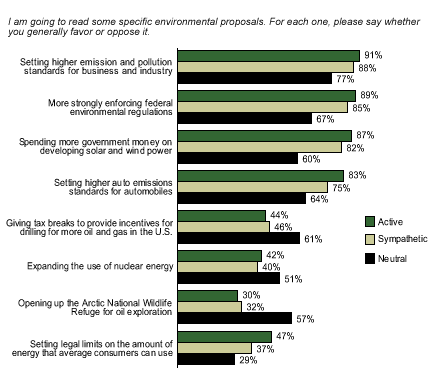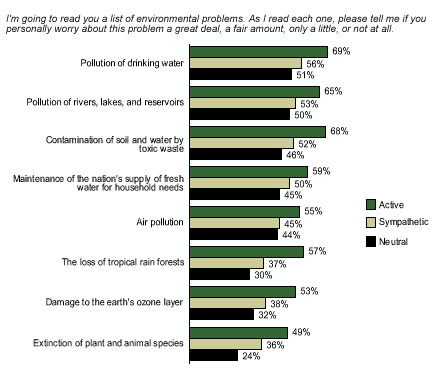On April 22, environmentally minded Americans will take part in hundreds of events nationwide in recognition of Earth Day. But who are they?
Environmental activists have been painted as liberal extremists by conservative pundits and crusading underdogs by those on the left -- reality, as usual, is somewhere in the middle. As the "green" movement continues to mature, those extreme portrayals are becoming largely outdated as mainstream culture comes to grips with the fact that environmental concerns are here to stay, and they must be addressed in ways that everyone can live with.
In Cradle to Cradle, a new book by William McDonough and Michael Braungart, the authors outline their ideas for achieving what has become a frequently cited goal -- to mitigate ecologically harmful practices without sustaining severe losses in business productivity. Fundamentally, what's needed is common ground -- a better mutual understanding of the environmental perspective and the business perspective -- in order to come up with strategies that address the needs of both.
Demographics
Recent Gallup data on environmental issues provide some insight on the concerns of those who consider themselves "active" in the environmental movement versus those of other Americans. A study conducted March 4-7* asked respondents, "Do you think of yourself as an active participant in the environmental movement, sympathetic toward the environmental movement but not active, neutral, or unsympathetic toward the environmental movement?" About half of all Americans (51%) put themselves in the "sympathetic" category, one-fourth (24%) classify themselves as "neutral" and 5% say they are "unsympathetic" toward the environmental movement.
That leaves about one in five Americans (19%) who say they are "active participants" in the environmental movement. Little difference by subgroup is observed when looking at those who say they are active participants. For example, roughly the same percentages of men and women say they are active participants. The same holds for age groups from 18 to 64, and all education and income levels. Even political ideology turns up little difference -- 20% of liberals say they are active environmentalists, versus 18% of moderates and 19% of conservatives. (Although there is an ideological tilt toward the left among the larger group of environmental "sympathizers": 59% of liberals put themselves in that category, versus 54% of moderates and 45% of conservatives.)
Public Policy Orientation
When it comes to Americans' orientation toward specific public policy proposals, an interesting pattern emerges: there tends to be little difference between "activists" and "sympathizers," but broader gaps between these categories and those who say they are "neutral" toward the environmental movement. When asked, for example, whether they think President Bush is doing a good job or a poor job in protecting the nation's environment, 42% of "activists" and 45% of "sympathizers" say he is doing a good job, but the number rises to 60% among those in the "neutral" category.
The graph below shows the level of support for eight specific environmental proposals among each of the three categories.

Does this mean that when it comes to attitudes toward specific environmental issues and policy, "activists" and "sympathizers" are really just one big group encompassing 70% of the U.S. population? Not really -- there are consistent differences between the two categories on another relevant dimension: their level of concern about environmental matters. Consider the graph below, which illustrates how much respondents say they personally worry about each of a set of specific environmental problems.

As the graph shows, when it comes to their level of concern with environmental issues, sympathizers fall closer to those in the neutral category than to those saying they are activists. What really differentiates self-described "activists" from most of their fellow Americans isn't the direction, but the magnitude of their feelings. They are considerably more likely than those in other categories to be troubled about environmental issues.
Key Points
Environmentalism has come a long way since the first Earth Day in 1970. Environmental "activists" now span all walks of life. Furthermore, it has become very difficult to label such activists as ideological radicals, because, as these data show, the main difference between them and the bulk of environmental "sympathizers" is their level of concern rather than the nature of their attitudes.
Next week – Part II: A Closer Look at Specific Environment Issues
*Results are based on telephone interviews with a randomly selected national sample of 1,006 adults, aged 18 and older, conducted March 4-7, 2002. For results based on this sample, one can say with 95% confidence that the maximum error attributable to sampling and other random effects is ±3%.
